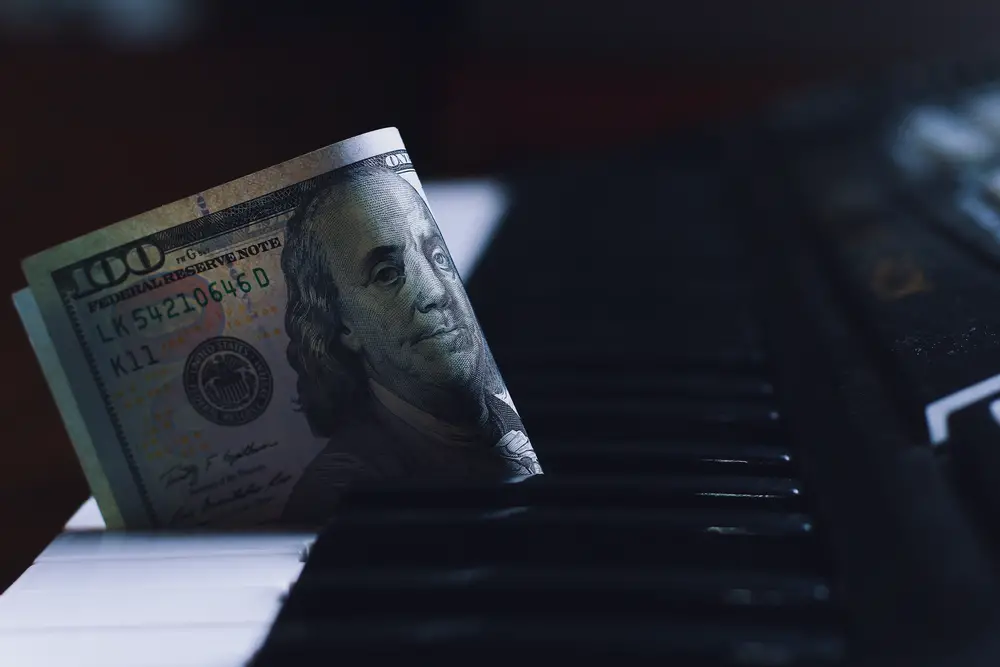
Let’s say you have a beautiful piano sitting in your home…
It’s an ancient instrument that you haven’t played since you were a beginner.
In the past 30 years, the piano has become less and less playable and enjoyable.
So, what do you do?
In this case, your piano is a prime candidate for restoration!
Table of Contents
- Are Particular Pianos Restorable?
- Determining If Your Piano Should Be Refurbished
- Restoration Process
- Restoration of Different Piano Types
- Cost of Restoring a Piano
- Shopping For Rebuilding
- Conclusion
Restoring a piano can yield fantastic benefits, but there are things you should know before going through with it. In this article, I’ll explain how to determine whether your piano is worth restoring, as well as the restoration cost and process.
Are Particular Pianos Restorable?
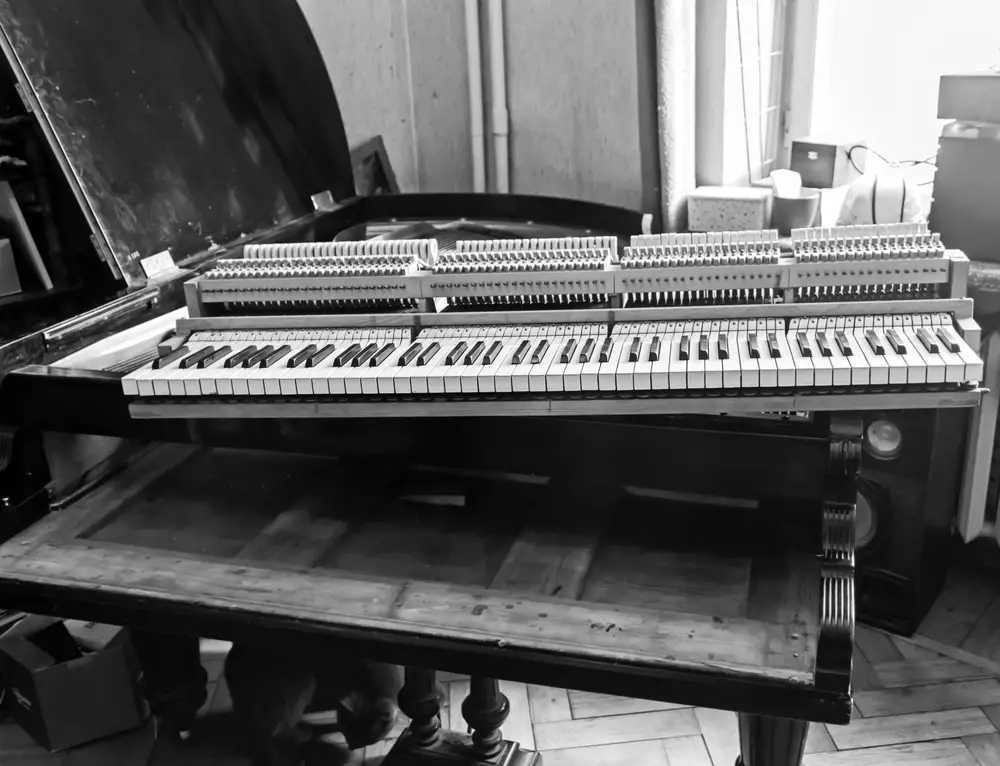
The answer to this question is yes. Pianos, regardless of the model, have the same fundamental parts. Antique-looking pianos might require a little extra work, but it’s not too big of a challenge for piano restorers. Before you get your piano restored, you must figure out if it’s worth it. However, I’ll cover that later in the article. Here are the major parts of each piano:
- Furniture
- Belly
- Action
Each of these categories contains different components. For example, the furniture comprises the case and finish of a piano. On the other hand, the belly contains the soundboard, pin block, bridges, strings, and plate. The other main piece of a piano is the action. You may or may not know that you can take all of the piano keys out of the body in one unit. The action includes the keys, hammers, and endless other parts. Basically, it’s every mechanism that makes the hammers hit the strings.
Many piano restoration companies offer services for antique and special pianos. Though every piano is unique, professionals can restore nearly every model.
Determining If Your Piano Should Be Refurbished
Refurbishing a piano can be an expensive process, so make sure it will be worth it. How can you know? It’s simple. Pay attention to the brand of your piano. A piano might be worth restoring if it’s an antique American piano. Some restorable brands include Steinway & Sons, Baldwin, Bechstein, Bosendorfer, and Mason & Hamlin.
However, it might not be worth your time to restore a cheaper, Asian-produced piano. You’ll end up spending more than the piano was ever worth merely to restore it. The American brands, however, can be worth restoring. A $10,000 restoration process could skyrocket the piano’s value. Antique Steinways and Bösendorfer’s can be well over $100,000.
If you aren’t sure about your piano’s value, it’s helpful to get professional advice.
Restoration Process
Though the restoration process can be an endless number of things, I’ll highlight the main things it may entail.
- The Pinblock
- Soundboard and Bridges
- Strings
- Harp
- Pedals
- Dampers
- Action
- Cabinet
- Keys
These things are the most common to restore in a piano. Your instrument might need special work on all of them or only a few.
Pin Block
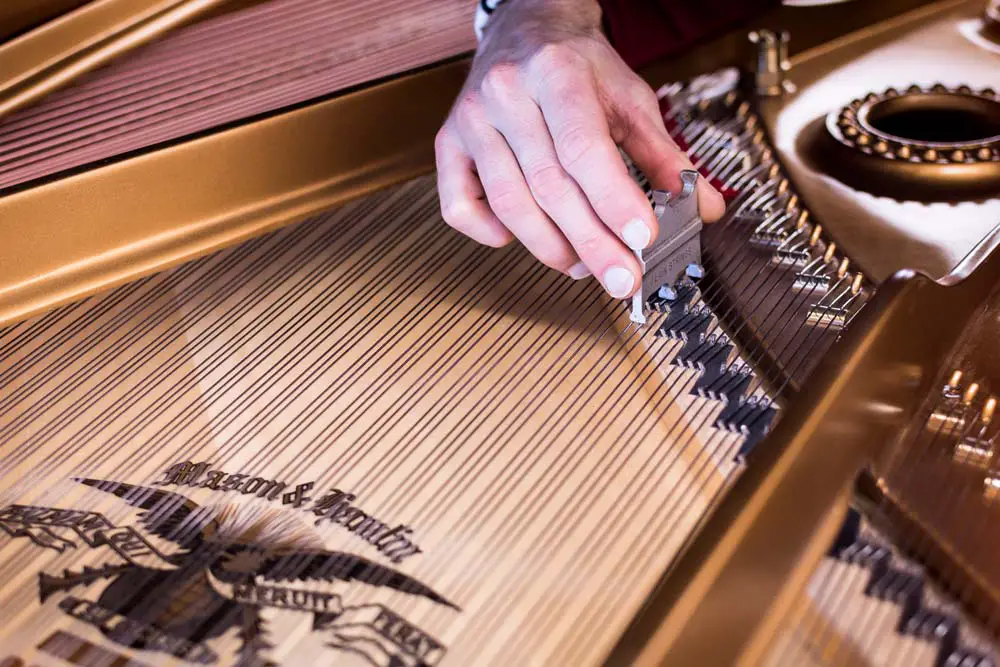
The pin block securely grips the tuning pins. Over time, these tuning pins can become loose. It’s nearly impossible to keep a piano in tune with loose tuning pins, let alone tune it. Since the pin block’s job is so important, manufacturers use several layers of sturdy wood to craft it.
Bridge
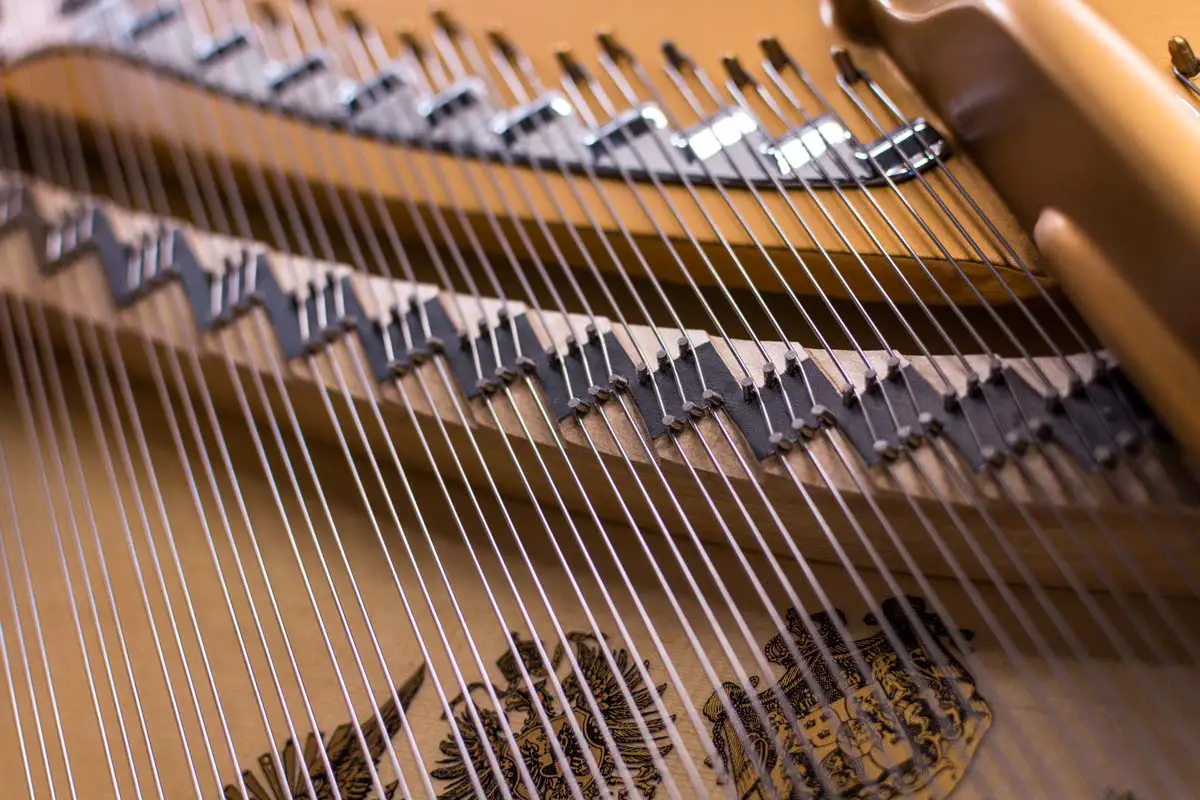
The bridge’s job is to put downward pressure on the strings, which transfers the sound to the soundboard. A soundboard resonates the strings, creating a loud sound. Without a soundboard, a piano’s volume would be similar to that of a guitar. Piano manufacturers use a wide variety of woods for their soundboards, but the most popular is Sitka Spruce.
Strings

The strings are the bread and butter of a piano. Each piano has over 200 strings, which are secured to the pin block. In antique pianos, it’s common to see string problems and breaks. Fortunately, piano restorers can fix all types of string issues, regardless of the piano model.
Most pianos have 3 strings for each note in the mid and high register. As the strings get lower, there is a transition to a single wound copper string. Naturally, it’s more expensive to replace the lower strings. Depending on your piano’s condition, a restorer might replace a few strings or all of them. The process will be significantly more expensive if all of them need to be replaced.
Harp

The harp is one of the heaviest parts of a piano, for a good reason too. This cast iron part is extremely robust, bearing the entire tension of the strings. If you’ve ever wondered how many pounds of force piano strings have, the answer may shock you. Normal pianos can have over 20,000 pounds of pulling force from the strings. Now you understand why the harp needs to be unyielding.
Pedals
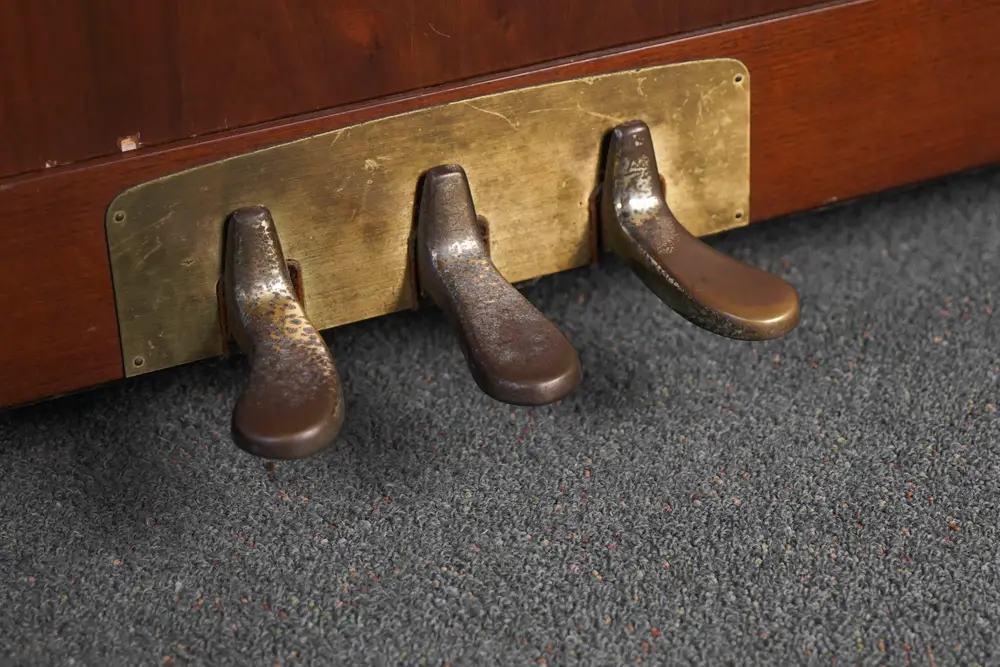
The pedals are also restorable. Over time, they can lose their quality and integrity. However, the most common problem lives in the pedal’s mechanism. When a pedal goes limp and no longer works, it’s usually off track inside the piano. For piano restorers, this fix is easy.
Dampers
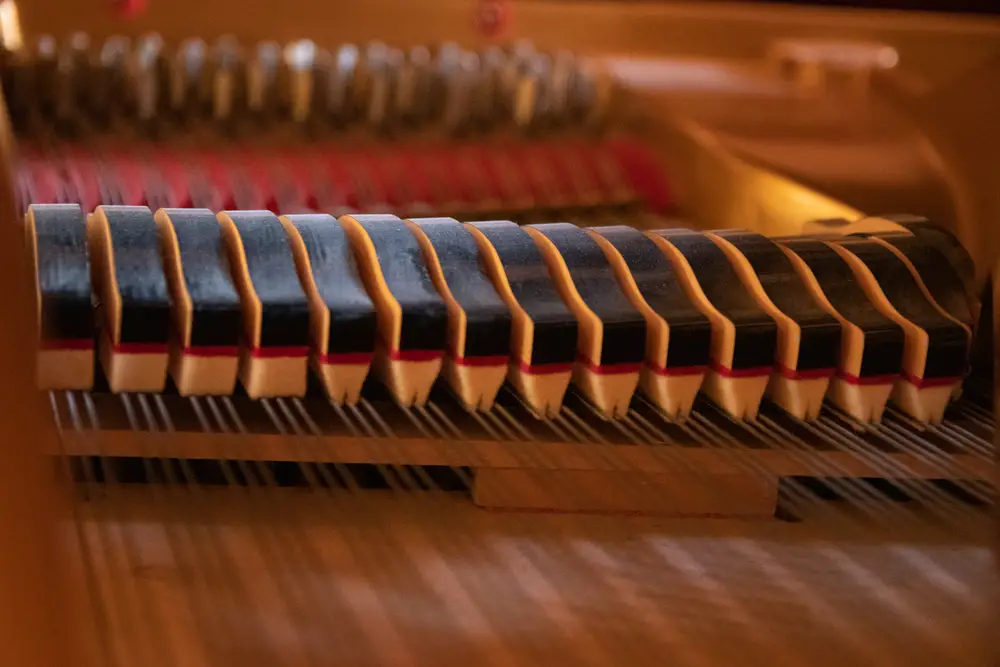
Dampers stop the strings from vibrating. Without dampers, pianos would sound as if the player was using a constant sustain pedal. On older pianos, dampers can get stuck in an open or closed position.
Action
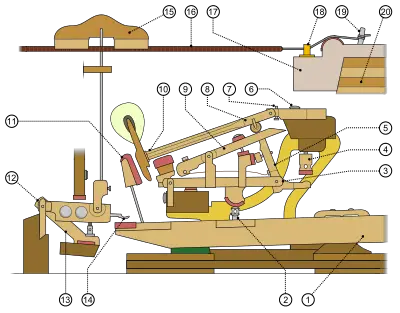
The action is a complex process. If your piano has lots of action/related issues, it might be extra expensive to restore. It includes thousands of parts that work together to transfer your key strike energy to the strings. Each key doesn’t have thousands of parts, but all the combined key components in the piano are in the thousands.
Cabinet
The cabinet is the piano’s body. It houses all the internal mechanisms of the piano. Lots of people choose to refinish their cabinets to create a sleeker look. The most common woods that manufacturers use for cabinets are Hard Rock Maple, African Mahogany, and Walnut. Piano bodies come in all sorts of colors, including black, brown, white, and more. Refurbishing professionals can refinish the body and even change the color of your piano.
Keys
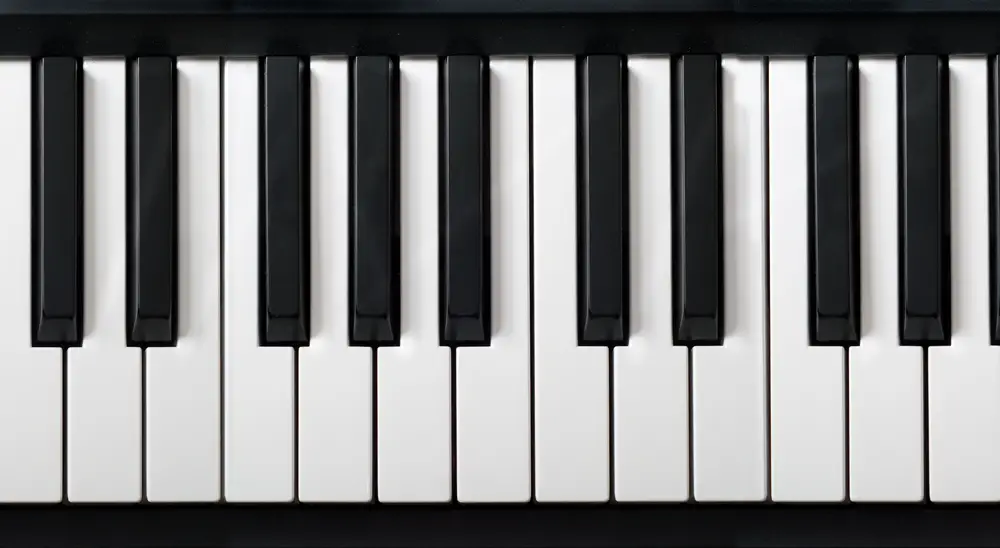
The keys vary from piano to piano. If you have an antique instrument, the keys might be ivory. If that’s the case, they might require extra care to repair or whiten. Ivory keys are also more likely to chip over time. Plastic keys, on the other hand, can keep their color and quality for a longer time.
Restoration of Different Piano Types

The restoration of upright and grand pianos is very similar. However, it’s much more challenging to access the internal parts of upright pianos. On grands, everything is laid out in the cabinet conveniently. For uprights, that’s not the case. Everything is sealed inside the vertical cabinet with one opening at the top. Piano restorers have to find a workaround to access the hidden parts. For example, upright pianos have air-tight pin blocks. For a long time, people had to saw open the cabinet open to get to the pin block. However, piano restorers picked up a new technique that doesn’t require sawing.
The restoration process of grand pianos is often more straightforward. Many of the piano’s components are exposed or easily exposable. A distinct replacement that an antique grand might need is ivory keys. Since this key material isn’t available anymore, it’s hard to find. However, some piano restorers have a limited supply of replacement ivory keys. Not all antique pianos need complete ivory restoration. There are plenty of easy ways to fixed chipped ivory keys.
Cost of Restoring a Piano
Restoring a piano is very pricey. The cost can be anywhere between $7,000 and $30,000. You can find loads of excellent new pianos for less money. This large price is why it’s not worth it to restore an old Asian piano. You don’t want to spend more on a piano than what it’s worth. You could just buy a new piano and save money instead.
There are 3 price categories to pay attention to:
- Current Value
- Restoration Price
- Post-Restoration Value
Let’s say your piano is unrestored and currently worth $5,000. The restoration cost will be around $20,000. If you’re going to get it restored, the post-restoration value should greatly exceed $25,000. For example, if you have a 1920 Steinway B, the post-restoration value could be $65,000 to $75,000. This new price is significantly higher than the cost of restoration, making the process worth it.
If the numbers don’t work out for restoration, you will need to look into piano disposal.
Shopping For Rebuilding
If you decide to get your piano restored, visit many rebuilding shops to get cost estimates. Each shop you find will have different rebuilding techniques and qualities. Some will be cost-friendly, while others will put quality before anything, including cost. Find a rebuilder you can trust, with lots of knowledge and experience.
Conclusion
Your piano may or may not be worth restoring. You can determine your next step by assessing the current value, restoration cost, and post-restoration value. It’s worth noting that a large percentage of pianos aren’t worth restoring. Many of them are uprights, spinets, and other vertical pianos.
However, people have different reasons for restoring a piano. Many people restore pianos if they have family significance. Other people restore their pianos merely so they can play them again or sell them. Regardless of the reasoning, it’s pleasant to know that almost every piano can be restored.
